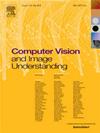Bidirectional temporal and frame-segment attention for sparse action segmentation of figure skating
IF 4.3
3区 计算机科学
Q2 COMPUTER SCIENCE, ARTIFICIAL INTELLIGENCE
引用次数: 0
Abstract
Temporal action segmentation is a task for understanding human activities in long-term videos. Most of the efforts have been focused on dense-frame action, which relies on strong correlations between frames. However, in the figure skating scene, technical actions are sparsely shown in the video. This brings new challenges: a large amount of redundant temporal information leads to weak frame correlation. To end this, we propose a Bidirectional Temporal and Frame-Segment Attention Module (FSAM). Specifically, we propose an additional reverse-temporal input stream to enhance frame correlation, learned by fusing bidirectional temporal features. In addition, the proposed FSAM contains a Multi-stage segment-aware GCN and decoder interaction module, aiming to learn the correlation between segment features across time domains and integrate embeddings between frame and segment representations. To evaluate our approach, we propose the Figure Skating Sparse Action Segmentation (FSSAS) dataset: The dataset comprises 100 samples of the Olympic figure skating final and semi-final competition, with more than 50 different men and women athletes. Extensive experiments show that our method achieves an accuracy of 87.75 and an edit score of 90.18 on the FSSAS dataset.
用于花样滑冰稀疏动作分割的双向时间和帧段注意力
时间动作分割是理解长期视频中人类活动的一项任务。大多数工作都集中在密集帧动作上,这依赖于帧与帧之间的强相关性。然而,在花样滑冰场景中,视频中的技术动作非常稀疏。这就带来了新的挑战:大量冗余的时间信息会导致弱帧相关性。为此,我们提出了双向时间和帧段关注模块(FSAM)。具体来说,我们提出了一个额外的反向时空输入流,通过融合双向时空特征来增强帧相关性。此外,拟议的 FSAM 还包含一个多阶段分段感知 GCN 和解码器交互模块,旨在学习跨时域分段特征之间的相关性,并整合帧和分段表征之间的嵌入。为了评估我们的方法,我们提出了花样滑冰稀疏动作分割(FSSAS)数据集:该数据集包括 100 个奥运会花样滑冰决赛和半决赛样本,其中有 50 多名不同的男女运动员。广泛的实验表明,我们的方法在 FSSAS 数据集上达到了 87.75 的准确率和 90.18 的编辑分数。
本文章由计算机程序翻译,如有差异,请以英文原文为准。
求助全文
约1分钟内获得全文
求助全文
来源期刊

Computer Vision and Image Understanding
工程技术-工程:电子与电气
CiteScore
7.80
自引率
4.40%
发文量
112
审稿时长
79 days
期刊介绍:
The central focus of this journal is the computer analysis of pictorial information. Computer Vision and Image Understanding publishes papers covering all aspects of image analysis from the low-level, iconic processes of early vision to the high-level, symbolic processes of recognition and interpretation. A wide range of topics in the image understanding area is covered, including papers offering insights that differ from predominant views.
Research Areas Include:
• Theory
• Early vision
• Data structures and representations
• Shape
• Range
• Motion
• Matching and recognition
• Architecture and languages
• Vision systems
 求助内容:
求助内容: 应助结果提醒方式:
应助结果提醒方式:


